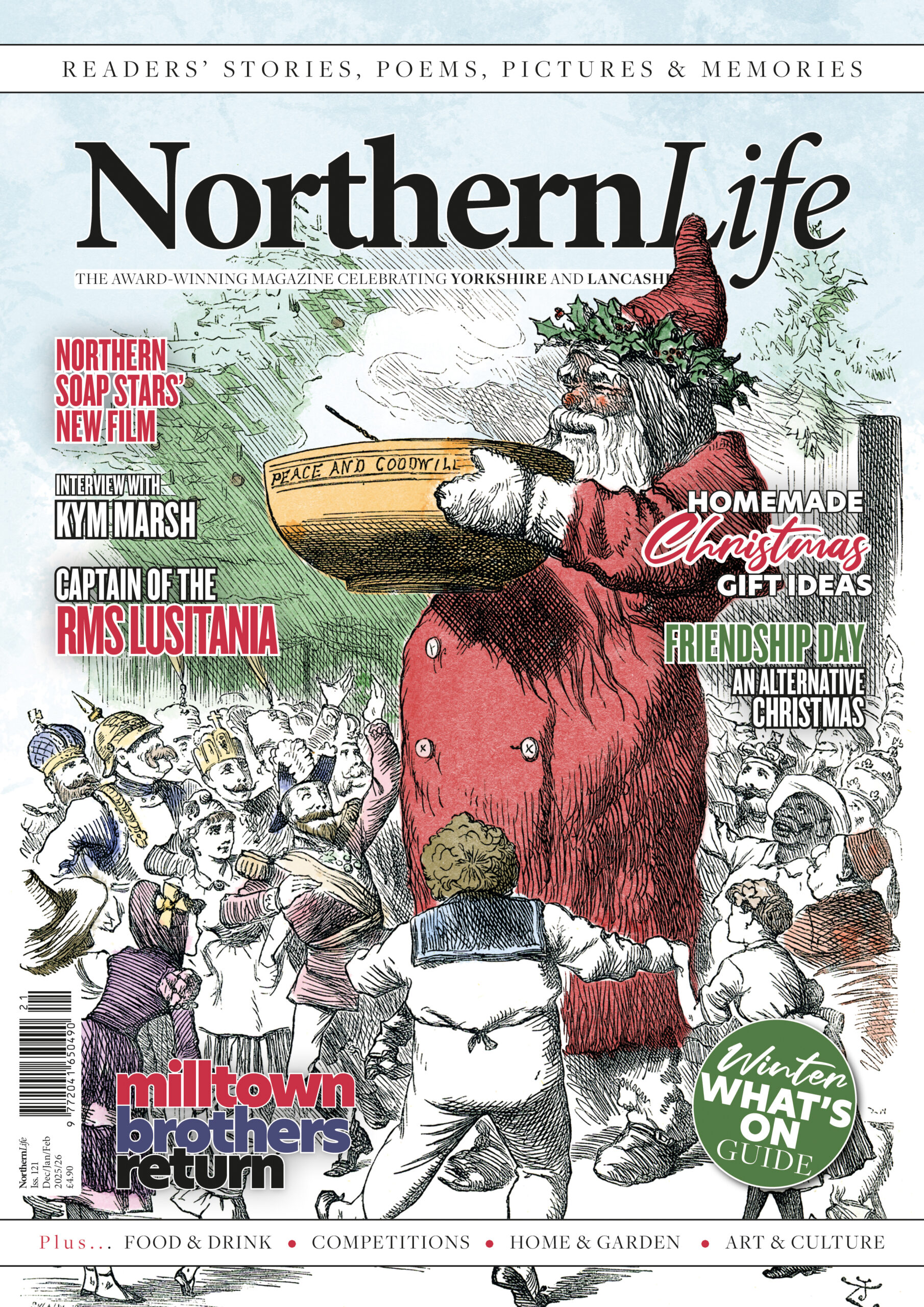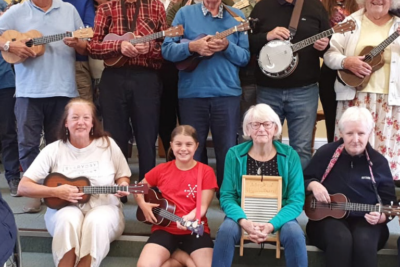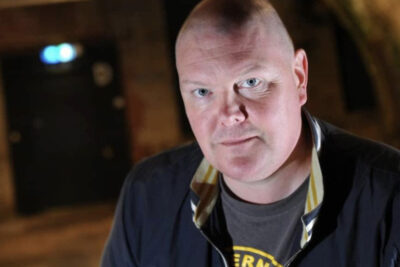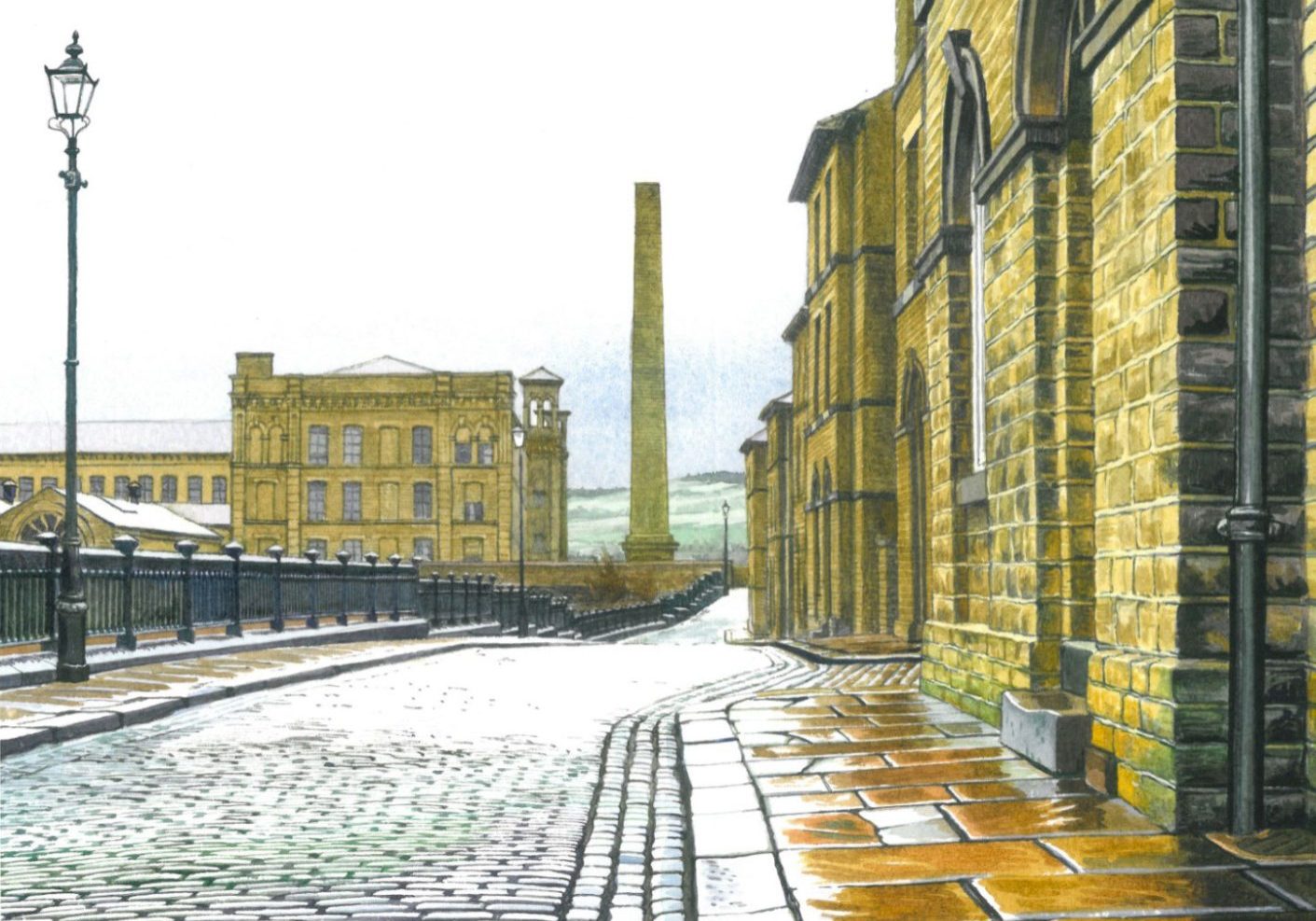
On Cobbled Streets Under Sombre Skies – Interview with Artist Stuart Hirst
by Andrew Liddle
Much admired Yorkshire artist Stuart Hirst talks to Andrew Liddle about his street scenes and the magic of a dull day!
Northern streets with all their back passages and privies, snickets and ginnels, viaducts and mill chimneys, corner shops and gas lamps – features that earlier generations took for granted – have a surprisingly tender beauty in Stuart Hirst’s canvases.
Cobbles that once rang to the sound of clogs are now in repose, clocking-on sirens forever silent. Refreshed after rain, stone-setts have become lustrous lozenges, honey-glazed and so lifelike you could be standing on them. “They come alive when they glisten,” he says, a matching gleam in his eyes. “They’re just magical.”
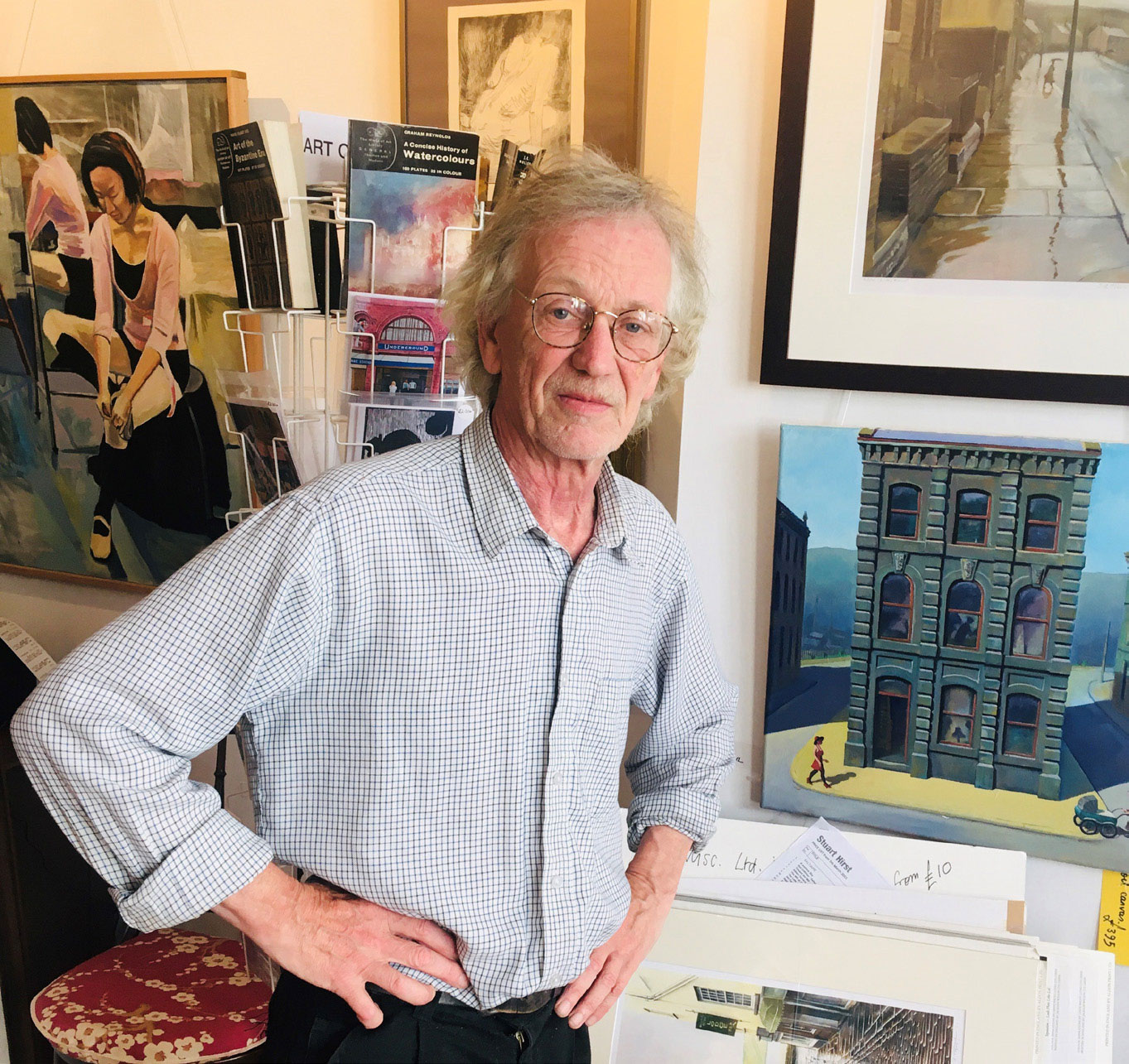
Stuart Hirst
Look at any one of his street scenes, and you can almost taste the wholesome freshness that air briefly has after a downpour, very welcome when skies were a smoke-filled grey. Nobody else creates this effect so stunningly, and it’s fair to say that to the public, he will always be the painter of wet streets – which for many years have been widely available and admired as prints. He smiles at the suggestion, even though he paints in radically different styles. “Yes, it’s true. They are what I’m known for, they kept me alive, and they still sell best.”
“I painted what I knew in my immediate environment, as truthfully and sincerely as possible.”
They don’t just transport us to forgotten corners of old mill towns and villages but give a reflection of a world that never entirely existed. The secret of Stuart’s unique appeal, indeed the reason why so many people fall instantly in love with his work, is that he is painting it realistically and without sentiment the way we would like to think it was.
It’s the Pennines, as people of a certain vintage would like to remember it, and it can still be found in Haworth, Saltaire, Holmfirth, Heptonstall and Sowerby Bridge, all of which feature prominently among the hundreds of views he has captured so evocatively. Their millstone grit cleaned up in the post-industrial age, they are in different ways a magnet for tourists, but they resolutely fight off attempts to prettify them and remain staunchly northern in character.
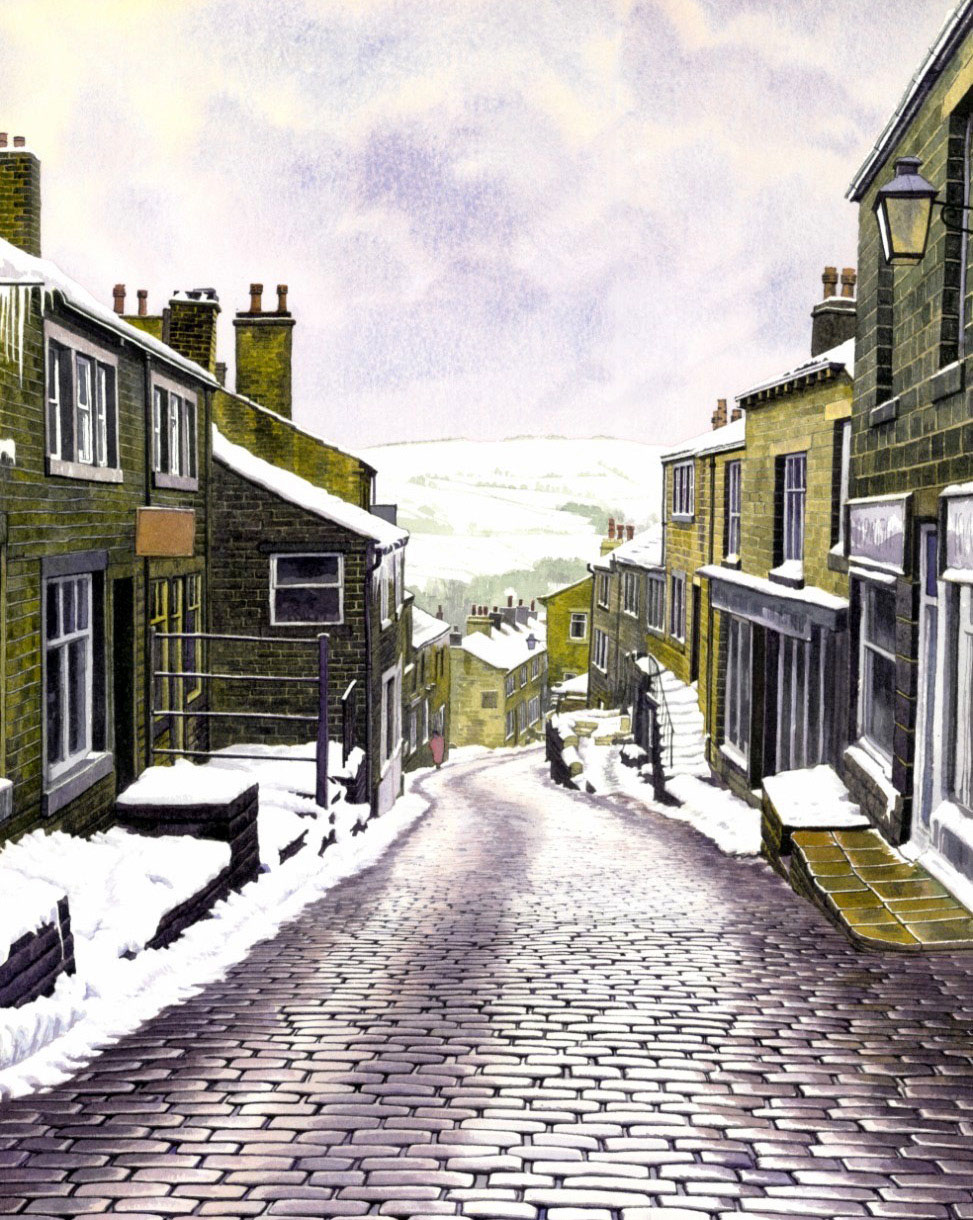
Haworth
Other less celebrated areas of, say, his native Bradford may have vanished but live on thanks to his portraits. “I’m naturally drawn to these quirky old streets I grew up in,” he considers, “and it seems the people of all ages who buy my stuff must be too.”
We are sitting in the Dorothy Rowan Gallery, which he opened in 2020, named after his mother, who bought him his first set of paints when he was only five and inspired him for life. After the last of his five children left home, he finally fulfilled a long-held ambition to move to Scarborough and exhibit in his gallery – and showcase other artists’ work.
He has only recently finished renovating and equipping it to his satisfaction – and when I finally tracked him down, I found him up a ladder painting the gutters. That’s the kind of man he is, nothing if not down to earth and resourceful.
It fronts onto Eastborough, the long and busy street that begins on the seafront and climbs to the town centre, changing its name. From the rear of the building are stupendous views of the harbour and south shore – which he has not yet got around to painting, although it is no surprise to see so many beautiful prints of the old town’s cobbled streets on shining display.
Suddenly, my eyes light on the craggy face of an old woman sitting drinking. Last seen more than fifty years ago, Miss Lily would have passed entirely from memory had Stuart not captured her in a way even a photograph could not. This is a portrait painting, at its very best, a character study rather than just a truthful representation of features. It was one of many vivid oil paintings of regulars that brightened the walls of The Queen Hotel in Daisy Hill, run by Stuart’s father. Perhaps the most memorable was a four-foot-tall mural of Arthur. More than a hint of the influence of Stanley Spencer has been detected in the striking naturalness combined with a sympathetic understanding in these portraits.
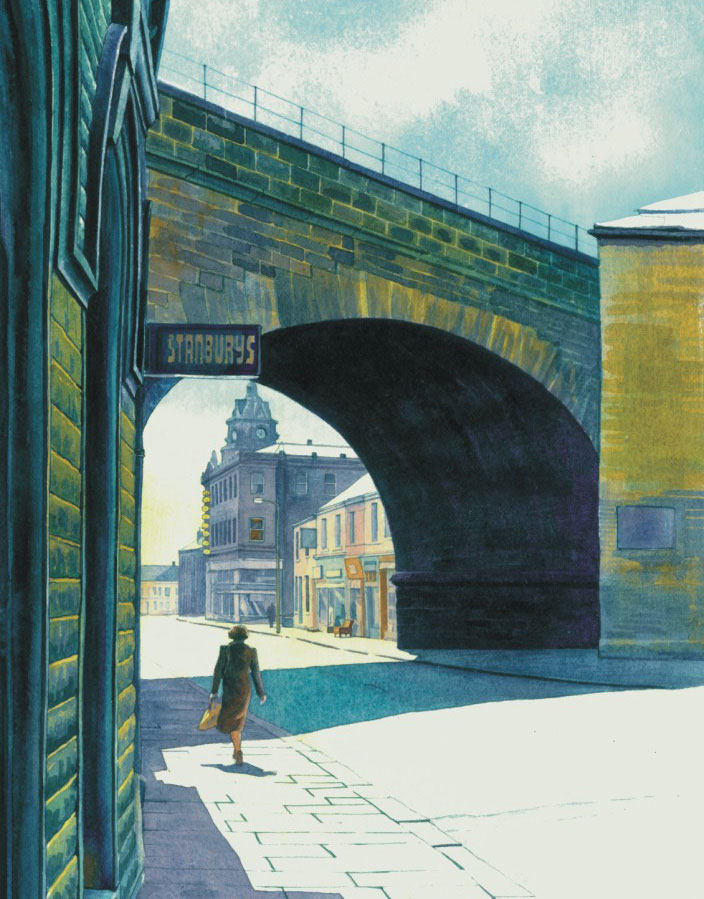
Viaduct Dewsbury
Before becoming a professional artist, Stuart worked behind the bar after completing a three-year course at Exeter Art College. In an upstairs room converted to a studio, he seems to have essentially turned his back on the modernism and pop art that dominated the art world at that time and painted for personal pleasure.
“At the time, I was creating a record of a disappearing world,”
His first exhibition of note, Bradford, Places and Faces, held in the Central Library in 1978, was a homage to his city. “I painted what I knew in my immediate environment,” he recalls, “as truthfully and sincerely as possible.” The orderliness of his studio matches the precision of his work. There must be at least a dozen fine brushes side by side on his desk, ordered by degree of thickness, next to the tidy distribution of tubes of paint. “At the time, I was creating a record of a disappearing world,” he continues, “as well as trying to capture a certain moment of the day – and I guess these are still my aim.”
The following year, he came of age with a much-acclaimed exhibition which travelled to most of the major towns in the transmission area of Yorkshire Television, who had awarded him their prestigious Fine Arts Fellowship, providing a year’s grant and necessary resources. After the television exposure, other exhibitions came thick and fast, including one in Scunthorpe much praised for the lifelike portraits of Emmerdale stars Joe Sugden (played by Frazer Hines), Annie Sugden (Sheila Mercier), Amos Brearly (Ronald Magill), and Henry Wilkes (Arthur Pentelow).
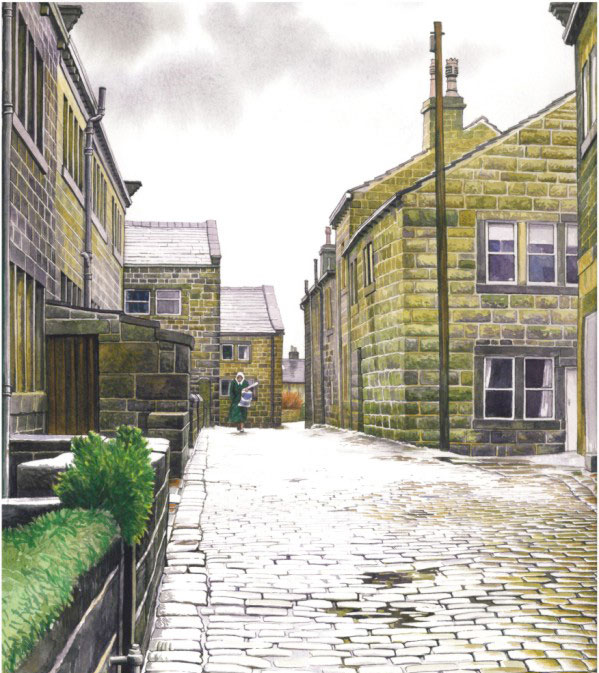
The Bradford Telegraph & Argus’ art critic revealed he had never seen so many spellbound people as those who queued to admire the Wet Street Exhibition in Cartwright Hall as Stuart moved away from portraiture to the style for which he is now famous. He had found a potent – and lucrative – means of expressing himself, and a long art career was to follow.
Perhaps his most universally admired scene is Albert Terrace, Saltaire, a perfectly preserved Victorian street he always treats with a reverential photo-realism, faithfully capturing it as it was. “I must have painted every yard of it dozens of times,” he enthuses, “always without the hideous concrete lamp standards.” It pleases him that eventually, the council were moved to replace them with reproduction gas lamps.
“I must have painted every yard of it dozens of times, always without the hideous concrete lamp standards.”
Although his paintings have a ‘wet look’, Stuart – the traditionalist – has little time for the currently fashionable ‘wet-on-wet’ technique, where paint is applied to soaked paper to attain a blurring effect as the colours bleed and run.
So, just how does Stuart achieve mesmeric glistening? “In the first place,” he says, “I use thick Bockingford paper – or similar quality – which absorbs the paint and allows precision, not blurring.” He goes on to explain how the shining surfaces are not painted. “In watercolours, white does not exist – you let the white of the paper shine through.” On close examination, it becomes clear he’s pulling off something of an optical illusion, creating the sensation of reflection with no pigment at all.
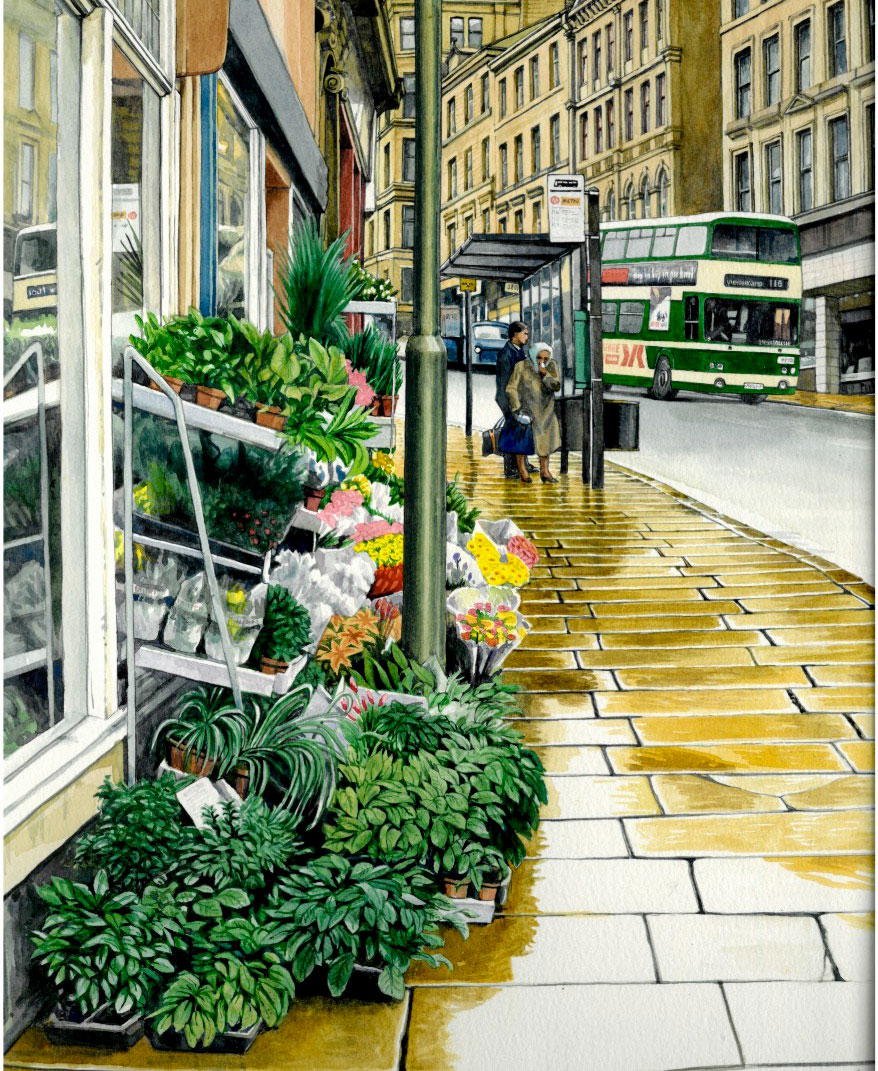
Bradford to Sunbridge Road
In the late 1990s, Stuart developed yet another style in an ongoing series of Street Life. Large, brasher, stylized indeterminately, these oil paintings feature isolated buildings that have remained when the rest of the street has been pulled down. There is an air of desolation about them even though they blend bright pastel shades with primary colours.
They have a slightly surreal aspect, which those who know their art have likened to the work of the American, Edward Hopper and even Lowry. Needless to say, these “Fantasy Scenes” are a world apart from the wet cobbles, which owe everything to reality.
“They are more fluid and deeper, with a touch of humour and pathos,” Stuart says. “Some people prefer them, which is why I will continue with both styles for the time being.”
Which does he prefer? He smiles enigmatically. “It’s not easy to find cobbles these days, you know!”
NorthernLife Jan/Feb 24
